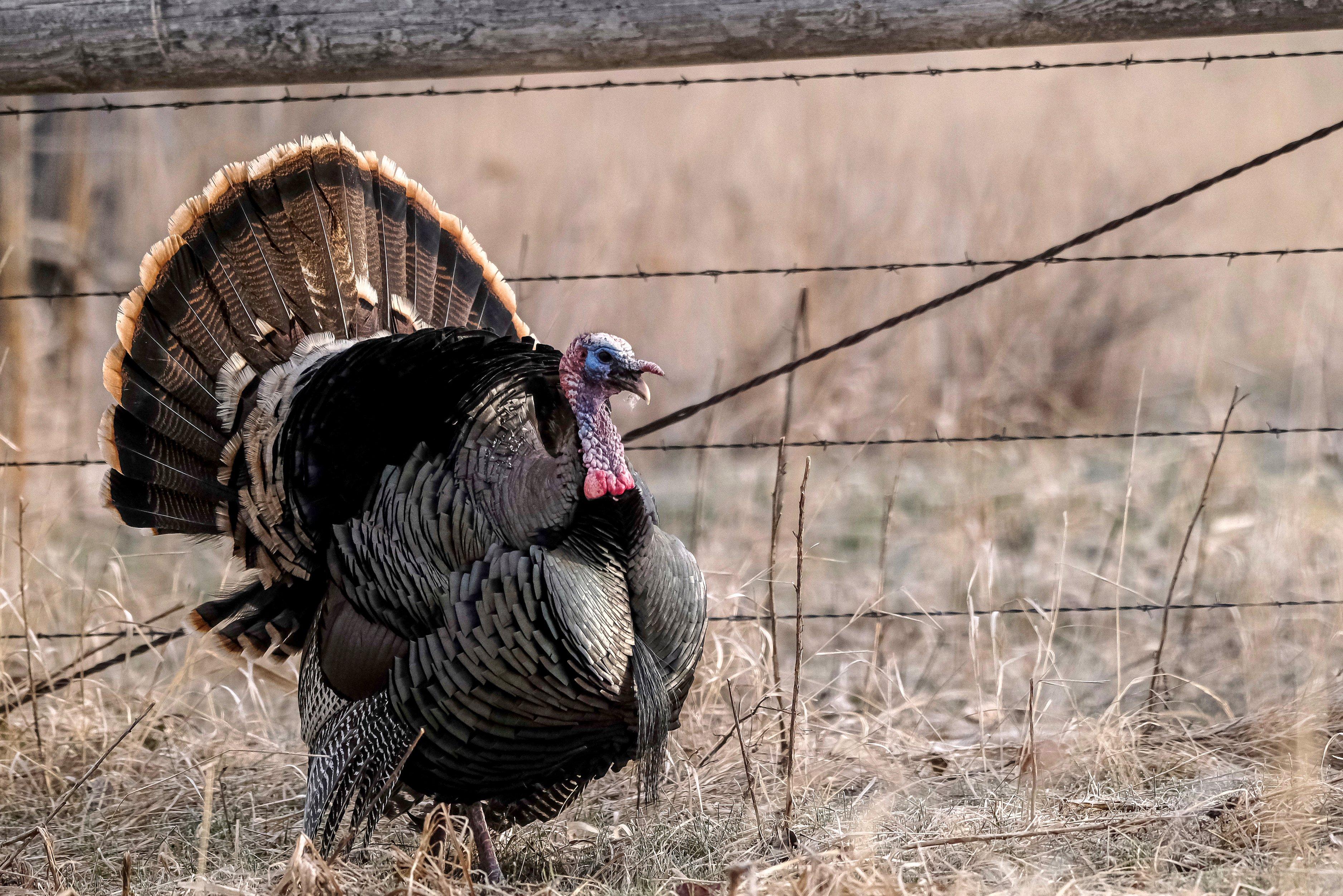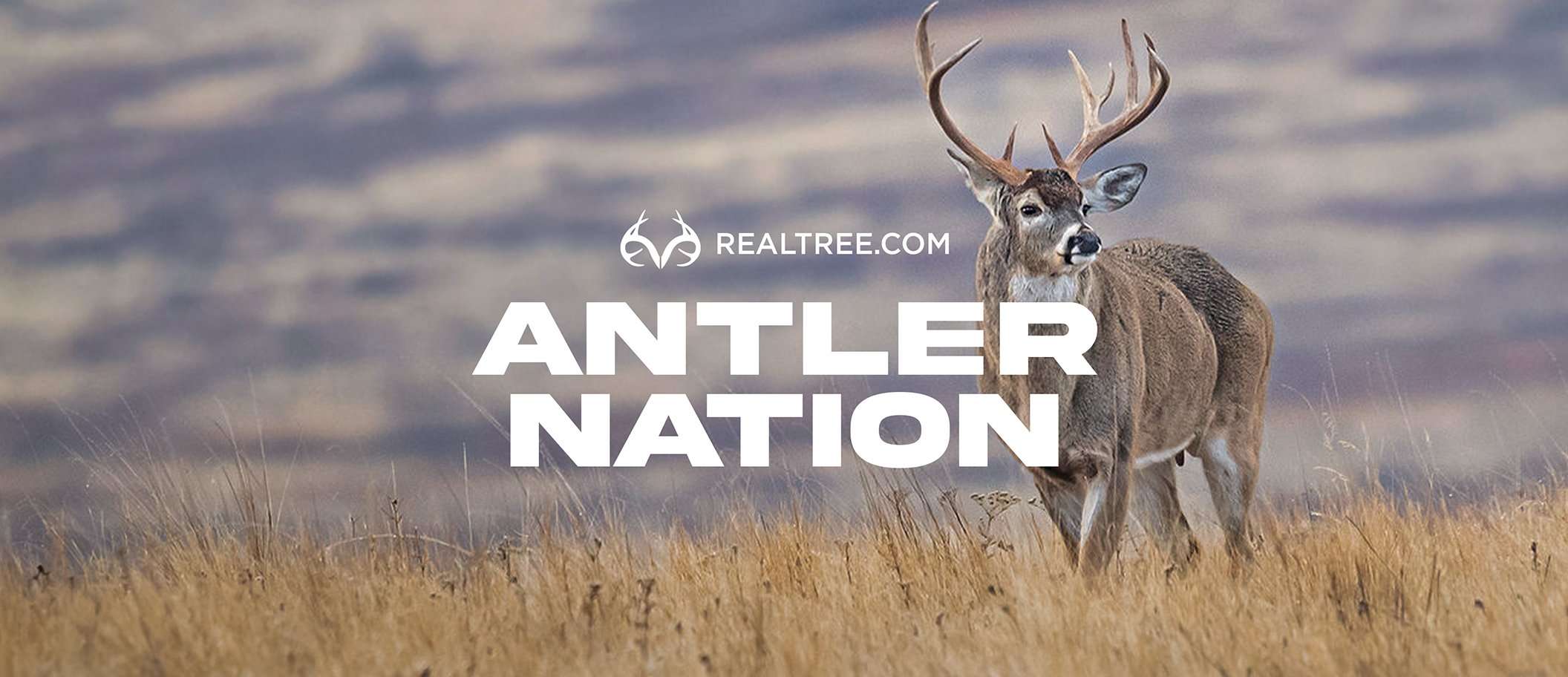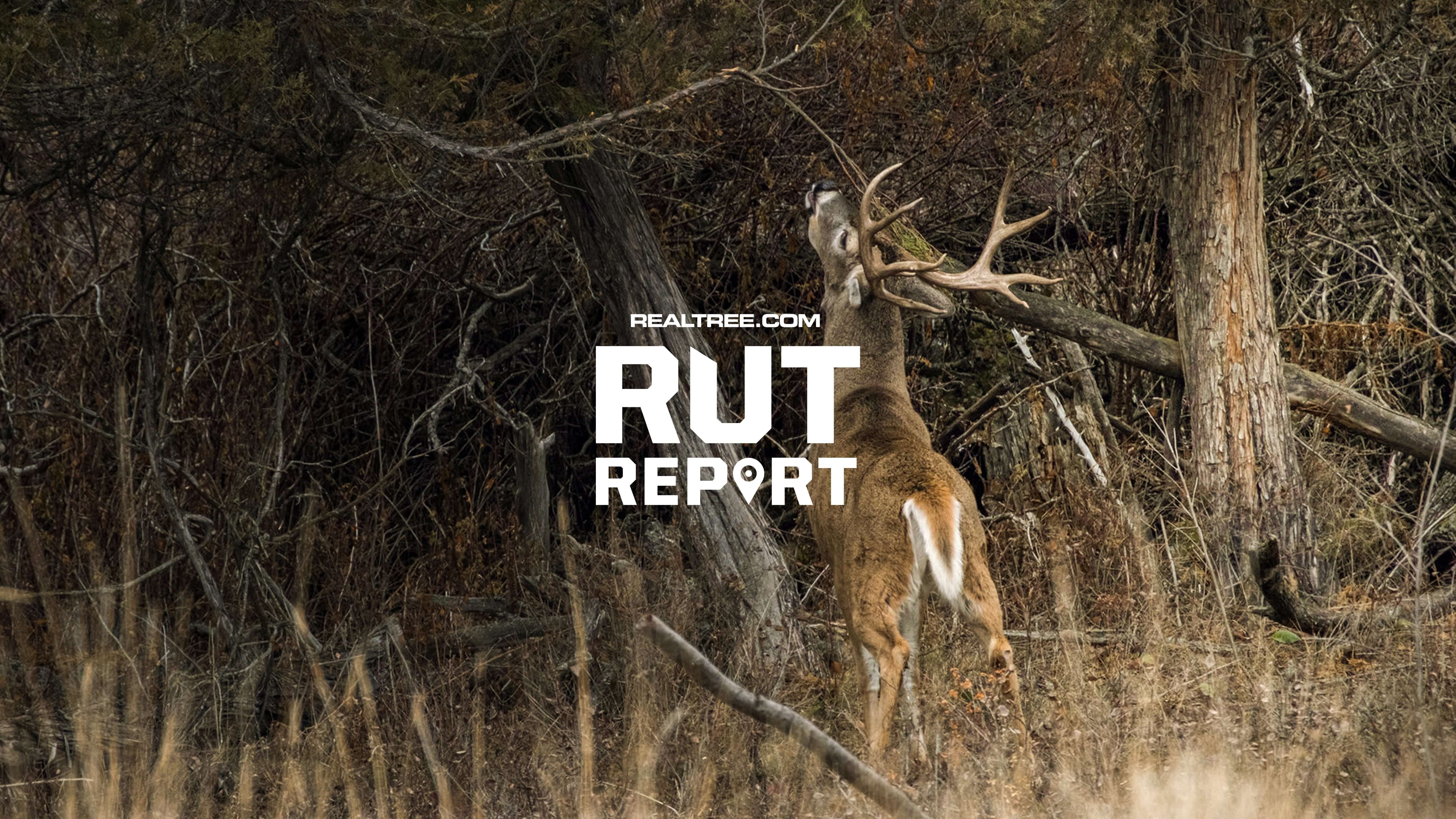Whether you hope to chase mountain Merriam’s or big-country Rio Grandes, the wild West should provide plenty of opportunities this spring

Turkey numbers look very good throughout much of the West. Photo by John Hafner.
Western turkey hunting promises adventure, whether you yelp across a deep valley to a distant peak or call your way along a sizzling-hot mesquite flat. And the action is typically good, especially when compared to chasing tight-lipped birds east of the Mississippi River.
Spring 2025 should be no exception. A few down spots aside, Western turkeys are doing well. Further, tags abound, and many seasons run through May. If you’re in the mood to chase hard-gobbling birds in spectacular scenery, this might be the year to do it.
Here’s a state-by-state look at what Western turkey hunters can expect this spring.
ARIZONA
“The outlook is very good,” said Rick Langley, terrestrial wildlife program manager for the Arizona Game and Fish Department, Region 1. “We have seen favorable winters and summer rains, which result in good poult production across the state.”
Langley said eastern portions of Arizona (units 1 and 27) and the North Kaibab (Unit 12A) probably feature the best prospects, but all state units look good for 2025. Winter had been dry through January, which should not affect turkey numbers for 2025 but might impact poult recruitment and survival during summer and fall if that trend continues.
Arizona holds mostly Merriam’s, about 3,000 Gould’s and a few Rio Grandes. In Spring 2024, the estimated total turkey harvest was 1,178.
Read More: Turkey Hunting in Arizona
CALIFORNIA
Matt Meshriy, environmental scientist with the California Department of Fish and Wildlife’s upland game program, said Spring 2025 prospects look solid, as state biologists believe the statewide turkey population is stable. In January, precipitation was at 112% of the historical average for the water year. And after several dry years through 2022, turkey populations have benefitted recently from consecutive years with favorable winter rains.
“Regionally, current wild turkey abundance indices are highest in the Sierra Nevada foothills and Central Valley, as well as around the San Francisco Bay,” he said. “In the north, they can be found on U.S. Forest Service lands in the Cascade Range, and to the west in the Mendocino and Central Coast mountains.
Rio Grandes are the most common subspecies in California, but hunters can also find some Merriam’s and Easterns in the northern part of the state. In 2023, California hunters took an estimated 17,014 turkeys.
Read More: Turkey Hunting in California
COLORADO
Edward T. Gorman, small-game coordinator for Colorado Parks and Wildlife, said Spring 2025 prospects are good, as the state has experienced mostly moderate weather this winter.
“For the most part, nesting and brood rearing conditions were normal last summer, so we do not anticipate anything unusual occurring,” he said. “There are always localized population fluctuations, but those are generally undetectable and very normal.”
Colorado holds Merriam’s and Rio Grandes. During Spring 2024, state hunters took 5,903 bearded turkeys.
Read More: Turkey Hunting in Colorado
Don’t Miss: Risk Versus Reward: Hunting Turkey Roosts
HAWAII
OK, maybe Hawaii isn’t a classic Western state, but the Big Island offers really good hunting for Rio Grandes. And Spring 2025 should be strong.
Good rains during winter should hopefully foster healthy birds and habitat for breeding and brooding hens throughout the year, according to wildlife biologists Joshua Pang-Ching and Kanalu Sproat.
Generally, private upland ranches on Mauna Kea mountain hold the most turkeys and feature the best hunting. However, not all are open for public hunting, and some require paid access through hunting programs. On public land, several upland-game bird hunters reported seeing larger-than-normal (15 to 20 birds) groups of turkeys along the northeastern and eastern slopes of the Mauna Kea Forest Reserve this past fall. Observers also noted healthier-than-normal turkey numbers on public lands on Mauna Loa mountain, although that area is not open for spring turkey hunting. That and other reports suggest a potentially higher turkey population for 2025.
Read More: Turkey Hunting in Hawaii
IDAHO
“The spring turkey outlook in Idaho remains strong,” said Jeff Knetter, upland game and migratory game-bird program coordinator for the Idaho Department of Fish and Game. “Currently, hunter success rates hover around 35% and have been steady for over five years.”
Typically, the state’s Panhandle and Clearwater regions produce the most consistent spring turkey hunting opportunities, Knetter said. Other areas to consider include the Southeast and Southwest regions. Spring hunting opportunities in the rest of the state are limited through controlled hunt opportunities.
Merriam’s, some Easterns and some Rio Grandes were released in Idaho during establishment efforts. However, because of mixing and trap-and-transplant efforts, there are likely no pure subspecies in the state. Knetter calls them “Idaho mountain turkeys.” During Spring 2024, Idaho hunters took about 7,000 birds.
Read More: Turkey Hunting in Idaho
MONTANA
Justin Hughes, Region 7 upland game-bird habitat specialist for Montana Fish Wildlife and Parks in Region 7, said turkey hunters should find plenty of birds in Spring 2025. Folks consistently find success with Merriam’s in Region 7, which covers southeastern Montana. Areas of central and western Montana also hold turkeys.
“Turkeys have had good recruitment in Region 7 over the last few years thanks to high numbers of grasshoppers and favorable nesting conditions,” he said. “Winters haven’t been a huge factor for the birds, as they have had enough mild weather mixed in with the bad to facilitate good overwinter survival.”
Hughes said Region 7 has a good mix of turkey habitat, including ponderosa pine and juniper breaks, and river bottom ag land with mixed cottonwood timber. He cautioned hunters to keep an eye on weather, as spring snow levels can highly influence the dispersion of birds from wintering grounds.
In Spring 2024, Montana hunters took 5,635 turkeys.
Read More: Turkey Hunting in Montana
NEVADA
“Spring 2025 should be good, and overall numbers in individual hunt units seem solid and on the rise,” said Justin Small, upland game specialist and coordinator for the Nevada Department of Wildlife. “However, don’t put that in the context of Eastern states’ turkey numbers, because we just simply do not have the habitat to have numbers that reflect those type of population densities.”
Small said hunters should find good bird numbers in central and southeastern Nevada. Elko County in eastern Nevada is still struggling from Winter 2022-2023, which really suppressed those populations.
“We are planning to augment some individual Elko County populations in hopes of jump-starting population growth and add some new genetics to help with future population resiliency,” he said.
Nevada has Merriam’s and Rio Grandes, but Rios comprise most hunting opportunities. Hunters take an average of about 65 turkeys per spring in Nevada, according to the National Wild Turkey Federation.
Read More: Turkey Hunting in Nevada
Don’t Miss: How to Avoid the 4 Biggest Turkey Calling Mistakes
NEW MEXICO
The Land of Enchantment has Merriam’s in most mountain ranges, Rio Grandes along river valleys, and Gould’s in the far southwestern corner of the state, in the Animas, Peloncillo and San Luis mountain ranges, and the Animas Valley. Spring 2025 prospects for each vary somewhat.
“Dry conditions led to lower [Merriam’s] reproduction in 2024,” said Casey Cardinal, resident game-bird biologist with the New Mexico Department of Game and Fish. “We did see a good mast production year, though. Ample mast combined with the mild winter we are having will likely lead to good overwinter survival. It may be a more challenging hunt in 2025, as there will be fewer young, naive birds on the landscape.”
Meanwhile, Rio numbers have been down the past few years across much of their range in New Mexico, Cardinal said. And dry conditions resulted in low reproduction for Gould’s in 2024, so their numbers will also be down this spring. (New Mexico Game and Fish authorizes two Gould’s enhancement tags per spring, and five tags are available in a draw, but only to state residents.)
During Spring 2023 — the latest year for which data is available — New Mexico hunters took 2,019 turkeys.
Read More: Turkey Hunting in New Mexico
OKLAHOMA
“Spring 2025 is looking promising,” said Eric Suttles, Southeast Region supervisor and co-turkey program coordinator for the Oklahoma Department of Wildlife Conservation. “Sightings of poults during the summers of 2022, 2023 and 2024 indicated several years of good to fair recruitment.”
That’s good news for a state where turkeys have struggled a bit recently, leading to season and bag-limit adjustments. Suttles said all regions of Oklahoma should offer good hunting this spring. In 2024, Sooner State hunters took 6,309 turkeys.
Read More: Turkey Hunting in Oklahoma
OREGON
Mikal Cline, upland game-bird coordinator for the Oregon Department of Fish and Wildlife, said Spring 2025 prospects look promising, as state turkey populations are holding steady or increasing, with little to limit their numbers.
“Flocks appear to be building in northeastern Oregon, particularly in the Catherine Creek unit and vicinity,” Cline said. “Depredation hunts in the John Day Valley have not had a major impact on overall flock numbers. Southwestern Oregon continues to host the highest densities of wild turkeys.”
The state holds Rio Grandes and Merriam’s/Rio Grande hybrids. During Spring 2023, Oregon hunters shot 5,619 turkeys.
Read More: Turkey Hunting in Oregon
TEXAS
“The outlook for the Texas spring turkey season is great,” said Jason Hardin, wild turkey program leader for Texas Parks and Wildlife. “We had a great hatch in 2023 and another above-average hatch this past summer. There will be an above-average number of 2-year-old gobblers scattered across the state where wild turkeys are normally located, as well as a good number of jakes.”
Hardin said the Hill Country and southern Texas look particularly good this spring. In fact, all areas with Rio Grandes look promising.
“Some portions of the Rolling Plains and northern Texas have seen some declines in recent years, but numbers are still up,” he said. “Eastern Texas always has fewer birds, but if you had birds to hunt last year, you will have just as good of numbers this spring.”
Texas hunters took an estimated 32,471 turkeys in 2024.
Read More: Turkey Hunting in Texas
Check Out Our Latest Camo Pattern: Realtree APX
UTAH
Heather Talley, upland-game program coordinator with the Utah Division of Wildlife Resources, said biologists are cautiously optimistic about the upcoming turkey season, as conditions had been mild through much of winter, and no areas of the state had experienced winter kill.
“However, if we do receive heavy snowstorms later this winter, we may experience issues similar to last year,” she said. “If we don't receive more moisture this winter, we will likely observe a decline in recruitment this summer.”
Talley said turkey numbers in the Northeastern Region are recovering from a hard winter two years ago. Winter 2023-2024 was mild, leading to better survival and good reproduction. Populations in the Southern Region have increased the past two years because of favorable weather, and Talley said hunters should find good numbers on both sides of Highway 12 from Grover to Escalante, and also across the Aquarius Plateau. The Northern Region should have more turkeys than in 2024, as all upland birds there are responding well to good conditions there. And turkey populations across the Central Region look good this year. Brood production was excellent during 2024, with a mild winter and decent summer precipitation.
During Spring 2024, Utah hunters took 3,259 turkeys.
Read More: Turkey Hunting in Utah
WASHINGTON
“It should be another great year for turkey hunting in Washington in 2025,” said Sarah Garrison, small-game specialist with the Washington Department of Fish and Wildlife. “Success rates for the spring and fall seasons continue to be high, with about half of hunters successfully harvesting a turkey.”
The state holds Merriam’s, Rio Grandes and Easterns. Garrison said the northeastern part of Washington continues to be the best area, as about 70% of the state’s turkeys are taken in that area.
“However, turkey populations are robust throughout eastern Washington, and the southeastern and Klickitat areas are also strong contenders for a successful turkey hunt,” she said. “Western Washington supports sparser populations of the Eastern subspecies, so turkey hunters looking for a challenge or looking to complete a slam might try here, but they’d be wise to spend time scouting and requesting access on private lands to have a chance at success.”
In 2024, Washington hunters took 12,613 turkeys.
Read More: Turkey Hunting in Washington
WYOMING
The outlook for Wyoming’s 2025 spring turkey season is very promising, according to Brandon Werner, Casper Region wildlife management coordinator for the Wyoming Game and Fish Department. The state’s harvest has increased annually, and observers have noted great poult production for three consecutive years.
“In addition, there have been back-to-back years of mild winters, resulting in low winter mortality,” he said. “Even with observed drought conditions across the state, a decent amount of spring moisture has resulted in good brood production.”
Werner said turkey populations are doing well throughout the state. Big Horn, Campbell, Converse, Crook, Johnson, Hot Springs, Natrona, Niobrara, Park, Washakie and Weston counties have a good number of birds.
The state mostly holds Merriam’s, with some Rio Grandees and hybrids. During Spring 2024, Wyoming hunters shot 4,203 turkeys.
Read More: Turkey Hunting in Wyoming












